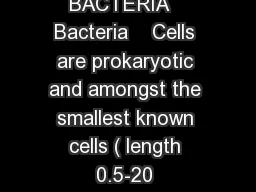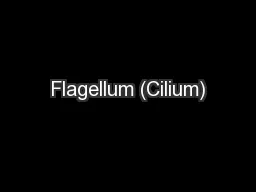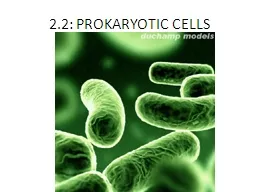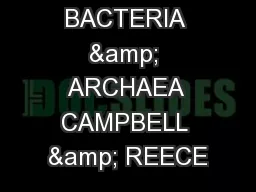PPT-BACTERIA Bacteria Cells are prokaryotic and amongst the smallest known cells ( length
Author : alida-meadow | Published Date : 2019-02-09
Lack a nucleus DNA is naked a single loop not bound in a chromosome May contain plasmids small circular fragments of DNA Have ribosomes but no other organelles DNA
Presentation Embed Code
Download Presentation
Download Presentation The PPT/PDF document "BACTERIA Bacteria Cells are prokary..." is the property of its rightful owner. Permission is granted to download and print the materials on this website for personal, non-commercial use only, and to display it on your personal computer provided you do not modify the materials and that you retain all copyright notices contained in the materials. By downloading content from our website, you accept the terms of this agreement.
BACTERIA Bacteria Cells are prokaryotic and amongst the smallest known cells ( length: Transcript
Download Rules Of Document
"BACTERIA Bacteria Cells are prokaryotic and amongst the smallest known cells ( length"The content belongs to its owner. You may download and print it for personal use, without modification, and keep all copyright notices. By downloading, you agree to these terms.
Related Documents














